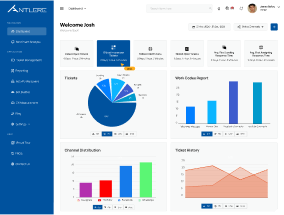What Is Contact Center Productivity? How Do You Measure It?
You can’t improve what you can’t measure – especially in the contact center, where performance is the heartbeat of the customer experience. Productivity goes beyond call volume and handling times. It’s about working smarter, not harder, to deliver outcomes that matter- for the customer, the employee, and the bottom line.
What Is Contact Center Productivity?
Contact center productivity refers to how efficiently and effectively a call center can handle customer interactions while maintaining a high level of service. It’s not just about how many calls are answered, but about how well those calls are handled – in terms of speed, accuracy, and customer satisfaction.
Simply, it’s the balance between volume and value.
Key Elements of Contact Center Productivity
- Agent Productivity:
This measures how much work an agent completes within a given time. It includes the number of calls handled, average handling time (AHT), and time spent wrapping-up or after-call work. - Call Center Efficiency:
This speaks to how well resources (people, tools, time) are used to deliver quality service. It includes both operational performance and the effectiveness of internal processes. - Customer Experience:
High productivity doesn’t mean rushing through calls. The goal is to reduce effort and increase resolution in every interaction.
How to Monitor Call Center Performance
Monitoring performance is key to understanding productivity. This involves tracking call center metrics in real-time and over time to spot trends, identify issues, and improve.
Common Call Center Metrics Examples Include
- Average Handle Time (AHT)
- First Call Resolution (FCR)
- Call Abandonment Rate
- Customer Satisfaction Score (CSAT)
- Call Center Service Level Calculation (e.g. % of calls answered within 20 seconds)
By tracking these, managers can determine where to improve call center agent performance and streamline workflows.
How to Measure Call Center Productivity
To get a clear picture of call center performance, you’ll need a blend of qualitative and quantitative data:
Important Call Center Agent Performance Metrics:
- Calls Handled per Hour/Shift
- After-Call Work Time (ACW)
- FCR (First Call Resolution)
- CSAT/NPS Scores
- Adherence to Schedule
- Occupancy Rate

How Does Reducing Repeat Calls Improve the Customer Experience?
Reducing repeat calls has a dual benefit:
- Better Customer Experience:
When issues are resolved on the first call, customers are more satisfied and trust your brand more.
- Increased Agent Efficiency:
Agents spend less time rehashing old issues and more time solving new ones. This directly improves agent productivity and reduces call volume, resulting in a win-win situation.
How to Improve Call Center Metrics and Performance
Here are actionable steps to enhance both productivity and efficiency:
Coach Agents with Targeted Feedback
Use real call center statistics to pinpoint gaps. Whether it’s long handling times or low FCR, coaching can tailor solutions.
Invest in Smart Technology
AI-powered tools can reduce wrap-up time, assist with real-time scripting, and flag issues early. These boost call center efficiency metrics without compromising quality.
Use Speech and Sentiment Analysis
These tools help identify calls that are likely to result in repeat contacts, helping you proactively reduce callbacks.
Balance Workloads and Schedules
Use call center service level calculations to predict staffing needs, ensuring agents aren’t overworked, and customers aren’t left waiting.
Track & Optimize Continuously
Knowing how to monitor call center performance is only the beginning. Make it a habit. Review reports weekly, hold short performance huddles, and create a culture of improvement.

Final Thoughts
Call center productivity is about more than just numbers – it’s about delivering better service, faster, and with less stress on your agents. By understanding what call center metrics to track and how to act on them, you can create a performance-driven culture that thrives on efficiency, empathy, and constant evolution.
Looking to take the next step? Start by asking: “Where are we wasting the most time – and how can we solve that without cutting corners?”

FAQ's
Call center metrics are measurable data points used to track performance and efficiency within a contact center. Examples include Average Handle Time (AHT), First Call Resolution (FCR), and Customer Satisfaction Scores (CSAT). These metrics help managers monitor call center performance and make informed decisions to improve agent productivity and customer service quality.
You can improve call center agent performance by offering regular coaching, using real-time performance dashboards, implementing AI tools for assistance, and maintaining a healthy work environment. Tracking call center agent performance metrics like schedule adherence and FCR is essential to identify areas for growth.
Reducing repeat calls improves customer experience by resolving issues the first time, which builds trust and satisfaction. It also helps boost call center efficiency by lowering the total volume of contacts, allowing agents to focus on new inquiries. That’s why understanding how does reducing repeat calls improves the customer experience is key to long-term success.
To measure call center productivity, you need to look at a combination of metrics such as calls handled per agent, AHT, CSAT, occupancy rate, and call center service level calculation. The goal is to assess both efficiency (speed and volume) and effectiveness (quality and resolution).
Some of the most effective call center metrics examples include:
- First Call Resolution (FCR)
- Average Handle Time (AHT)
- Customer Satisfaction Score (CSAT)
- Abandonment Rate









